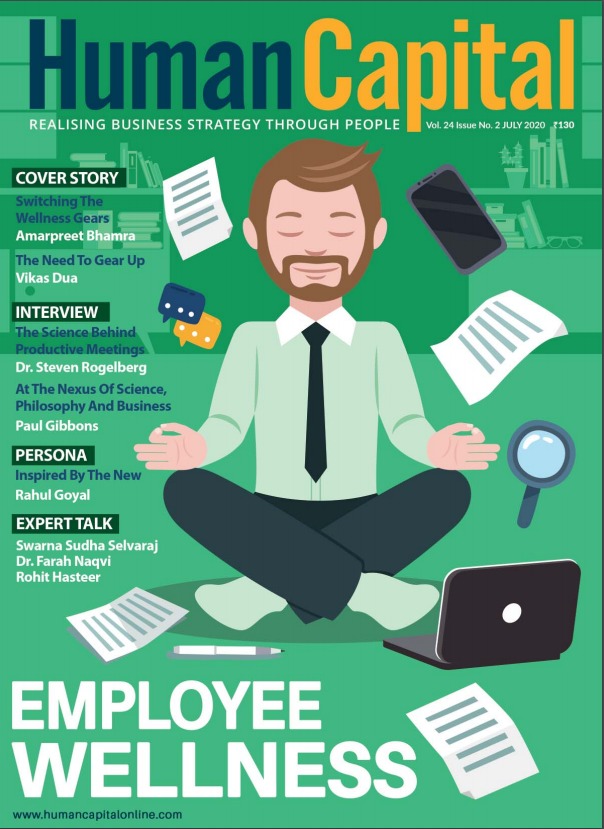Very often, amidst our busy schedules at the workplace, and in our zeal to attract and retain talent, we often forget employee recognition – a handy and easy-to-implement strategy.
Employee Recognition” is one of the foremost things of importance at the workplace. As per Aon Hewitt 2012 Trends on Global Employee Engagement, career opportunities, recognition, and organisation reputation are consistently the top engagement drivers. However, very often, amidst our busy schedules at the workplace, and in our zeal to attract and retain talent, we often forget this handy and easy-to-implement strategy.
It is therefore essential to carry out a deeper analysis. What does Recognition mean to you? If you ask this question to a group of people, it is possible to get as many views as the number of participants since each has his/her own viewpoint on it. And consequently, the manner of execution at the workplace also differs.
A structured approach
There are numerous ways to appreciate an employee. Several organisations have smartly attempted to standardise it (which will cater to the maximum number of employees) and have rolled out formally structured Employee Recognition practices with an intent to get maximum output out of it. So, is there a reason why should it be given such prime importance? The answer is YES! Studies say that timely recognition boosts the employees’ morale. They feel valued and get a sense of accomplishment, and at the same time, there is also an enhancement in productivity. In the long run, it also increases the engagement levels of the employees and lowers attrition.
As per a research by Deloitte, companies with employee recognition programmes have a 31% lower voluntary turnover. In today’s workplace, an employee recognition programme is a critical component. The positive effects of such employee recognition practices are highly visible, and hence, organisations see value in it. Nevertheless, it has to be remembered that when it comes to Employee Recognition, there is no one design fits all. It has to be tailormade so that it can cater to the maximum numbers and categories of employees. If required, it has to be unique to different geographies too, as the idea of recognition is very different in various cultures (formal/casual, instant/monthly/yearly, private/ public etc.).
The speed is the key
To start with, several companies have their own recognition programmes on the basis of employee tenure. While it is great to celebrate 5/10/15 year work anniversaries, it is important to remember that the need and speed of recognition for Millennials differ a lot from the tenured employees. Also, a workplace has a mix of people with different personality types. Some who are driven by instant recognition will not be impressed by yearly recognition trends.
Further, it is vital to understand that it cannot be only a Manager’s job since peer-to-peer recognition also works wonders. As per the SHRM/Globoforce Employee Recognition Survey, 2012, Peer-to-peer recognition is 35.7% more likely to have a positive impact on financial results than Manager-only recognition. Hence, the frequency and model of the recognition needs to be customised as per the workforce configuration.
The monetary angle
While we are at it, one would like to highlight an important angle - the monetary angle associated with Employee Recognition.
Prima facie, it is heard on numerous occasions that recognition is meaningful only when it is complemented by monetary rewards. Taking a cue from this, in an Employee Engagement Result Sharing workshop that I was facilitating, we decided to dig further. We asked everyone in the audience to write down a moment when they felt recognised or appreciated. It was a wake-up call for most of the participants themselves when the results showed that none of them spoke about being rewarded financially. All they had to speak about were a few words of kindness or encouragement or motivation that either came from their supervisors or team members.
Apparently, many organisations/ leaders believe that they are sorted if they roll out a programme which rewards “Recognition” via cash incentives and bonuses. However, this is not the case. Giving away only monetary benefits will never turn the employees towards the Organisation. On the contrary, this encourages a behaviour where employees will end up working and getting encouraged by money alone. This also means that it is making things easy for your competitors, who can pick your talent by paying a little more than what you are paying them.
So, to keep it simple and effective, it is important to devise a way where the employees can be recognised in a: -
• Timely manner (Thumb Rule: Late Recognition = No Recognition)
• You may also establish simple and clear parameters to encourage these behaviours and ingrain them as an Organisation Culture.
• Be sure that this is not misused (Recognition in lieu of promotion/ only for the outcome and not the efforts etc.)
• Establish and re-establish those channels of Recognition and talk about them repeatedly until it is too difficult to miss. Unfortunately, as per Bersin by Deloitte’s The State of Employee Recognition, 2012, nearly 75% of organisations have a recognition programme (despite the fact that only 58% of employees think that their organisations have recognition programmes)
• Most often than not, it should be a public platform, and for that, you may use a variety of tools (involving families, using social media, creating a unique experience that stays with the employee)
Thus, in a nutshell, we need not wait to appreciate any of your fellow employees till your Organisation formally launches an Employee Recognition Programme or go via the prescribed channels alone. The best way to do is to be honest and sincere about it and go for it now!
(2).png)
Do you think hybrid work arrangements would be a common feature of the workplaces going forward?
Trending
-
SBI General Insurance Launches Digital Health Campaign
-
CredR Rolls Out 'Life Happens' Leave For Its Employees
-
Meesho Announces 30-Week Gender-Neutral Parental Leave Policy
-
Microsoft Unveils Tech Resilience Curriculum To Foster An Inclusive Future
-
60% Indian Professionals Looking For Job Change Due To COVID: Survey
-
SpringPeople And Siemens Collaborate For Digital Transformation Push
-
86% Professionals Believe Hybrid Work Is Essential For Work Life Balance: Report
-
Almost 1 In Every 3 People's Personal Life Affected Due To Work Stress
-
Meesho Rolls Out Reset And Recharge Policy For Employees
-
80% Of Talent Leaders & Academics Say Pandemic Changed Skill Needs For Youth: Report
-
Hero Electric Rolls Out 'Hero Care' Program For Employees
-
Human Capital In Collaboration With ASSOCHAM Hosts Virtual Conference
-
IKEA India, Tata STRIVE Collaborate To Create Employability And Entrepreneurship Opportunities
-
SAP India, Microsoft Launch Tech Skilling Program for Young Women
-
DXC Technology, NASSCOM Collaborate For Employability Skills Program
-
Lenskart To Hire Over 2000 Employees Across India By 2022
-
Mindtree Launches Learn-and-Earn Program
-
Tata AIA Extends 'Raksha Ka Teeka' To Its Employees
-
Swadesh Behera Is The New CPO Of Titan
-
NetConnect Global Plans To Recruit 5000 Tech Professionals In India
-
Hubhopper Plans To Hire 60% Of Indian Podcasters By 2022
-
Corporate India Needs More Women In Leadership Roles: Report
-
Aon to Invest $30 Million and Create 10,000 Apprenticeships by 2030
-
Tech Mahindra Launches ‘Gift a Career’ Initiative for Upskilling of Youth
-
40% Women Prefer Flexible Working Options in Post-COVID World: Survey
-
3 out of 4 companies believe they can effectively hire employees virtually: Report
-
Vodafone , CGI and NASSCOM Foundation launch digital skills platform
-
Odisha: Bank, postal employees to deliver cash for elderly, differently-abled persons
-
Skill India launches AI-based digital platform for "Skilled Workforce"
-
Hiring activity declines 6.73% in first quarter: Survey
-
70% startups impacted by COVID-19 pandemic
-
Bajaj Allianz Life ropes in Santanu Banerjee as CHRO
-
Over 70 Percent MSMEs look at cutting jobs to sustain businesses
-
93 Per Cent employees stressed about returning to office post-lockdown
-
Johnson & Johnson India announces family benefits for same gender partners
-
Indian firms turning friendly towards working mothers
-
Welspun India names Rajendra Mehta as new CHRO
-
Wipro partners with NASSCOM to launch Future Skills platform



Human Capital is niche media organisation for HR and Corporate. Our aim is to create an outstanding user experience for all our clients, readers, employers and employees through inspiring, industry-leading content pieces in the form of case studies, analysis, expert reports, authored articles and blogs. We cover topics such as talent acquisition, learning and development, diversity and inclusion, leadership, compensation, recruitment and many more.
Subscribe Now












































Comment